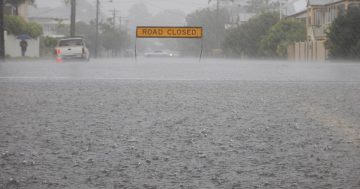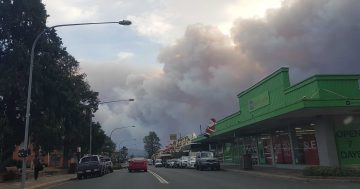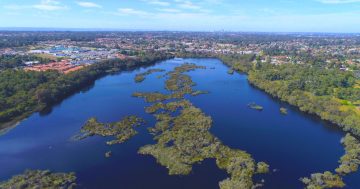Philip Bump* says while most people understand the Earth is getting hotter, they may not realise that the effects of climate change are much broader than just higher temperatures.

Photo: Ken Treloar
One thing I’ve noticed over the years as I’ve written about climate change is that the predicted effects of a warmer world often aren’t well known.
People understand that the planet is getting hotter, but the effects of the increased heat are much broader than simply higher temperatures.
Alex Halliday, Director of the Earth Institute at Columbia University, helped me outline the negative repercussions scientists expect to see.
Direct effects of higher temperatures
Increased health risks.
One of the most immediate effects of higher temperatures is an increased threat of health risks such as heat stroke.
Drought.
There will be more droughts.
For one thing, higher temperatures will lead to faster evaporation of surface water.
For another, they will mean less snowfall, as precipitation will be more likely to fall as rain.
In some regions, flows of water through the spring and summer are a function of snow melting, so a reduced snowpack means less water.
Wildfires.
Higher temperatures and drier conditions in some places will also help wildfires spread and lengthen the wildfire season overall.
Shifts in growing areas for crops.
Higher temperatures are expected to shift growing areas for some crops.
Broader spread of some diseases.
One of the benefits of living in a colder-weather climate is that winter kills insects such as mosquitoes.
As temperatures stay warmer, mosquitoes will be more likely to survive.
Diseases that are commonly associated with the tropics will become more common elsewhere.
Increased temperatures will also allow other microbes to survive in regions where they would previously have been killed off.
Increased moisture in the atmosphere
Big precipitation events will be more intense.
One of the odd things about climate change is that the effects are expected to be radically different in different places.
Warmer air holds more moisture.
So in large precipitation events, such as major storms, there’s more water in the air that can fall to the ground.
This is one of the reasons people point to the role of climate change in the development of cyclones.
Halliday noted, though, that predicting where rainfall will increase has “been one of the hardest parts of climate change”.
In part that’s because the warming climate is expected to change how weather circulates and the science on these changes is still in its early stages.
Warmer temperatures.
Atmospheric moisture helps trap heat, making the problem of climate change worse.
Increased flooding.
The increase in precipitation in some places will lead to more inland flooding.
Changes in the oceans
Rising sea levels.
The more obvious flooding risk comes from rising sea levels, which is already well-documented.
Rising sea levels are a mostly a function of two things.
The first is that warmer temperatures melt glaciers.
The problem here isn’t ocean ice melting — it’s melting ice on land.
The second is warmer ocean temperatures.
Water expands as it warms, and that increases the volume of the water.
An increase in ocean volume means higher sea levels.
Halliday noted that as with other predicted effects, the places where sea levels will rise the most vary.
In some places, sea levels have fallen because glaciers have melted, reducing the weight pressing down on a land mass and allowing it to rise.
The combination of greater storm precipitation and higher sea levels is the reason the effects of major storms will continue to be dramatic.
Storms remaining relatively motionless as they empty on to cities makes the potential for disaster much worse.
About 40 per cent of the world’s population lives within 100 km of the ocean.
Warmer ocean water.
Speaking of storms, warmer oceans contribute to the severity of storms.
That warmth helps fuel tropical cyclones and is one reason we’ve seen recent storms become so big so fast.
Ice melt.
Warmer water combined with warmer temperatures helps melt sea ice more quickly.
While this doesn’t contribute to sea level rise, it does shift animal habitats and affect people in those regions.
Melting ice at the Poles also exacerbates the warming problem.
Ocean water is much darker than ice, so it absorbs more energy from the sun.
Shifts in sea habitats.
Another effect of warmer ocean water is that it affects sea life, much as warmer air temperatures affect crops.
More-acidic oceans.
Carbon dioxide, the most common greenhouse gas, doesn’t end up only in the atmosphere.
The oceans also absorb a lot of the carbon dioxide from the burning of fossil fuels, which is making them more acidic.
That acidification has a negative effect on some sea life.
The combination of increased acidification and warmer water is what poses the greatest risk to the world’s coral reefs.
Climate change will make itself worse
There are examples of this above, like the melting of ocean ice leading to increased energy absorption and warmer oceans.
But the most significant negative feedback is from a different sort of melting.
Thawing permafrost.
Some areas in the Arctic that are normally frozen year-round have begun to thaw.
That includes a lot of vegetation that, once thawed, begins to rot.
That rotting will release a lot of methane — a greenhouse gas that’s much more effective at trapping heat.
The thawing of permafrost, Halliday said, could reach a tipping point where “you suddenly accelerate a change” that increases warming much more rapidly than previously expected.
The result could be catastrophic, including triggering a chain of other tipping points that themselves accelerating warming.
The report on climate change released by the United Nations last week addressed a fairly specific rate of warming, and the difference between an increase in 1.5ºC and 2ºC degrees Celsius.
But the effects of a chain reaction of tipping points could be much worse still.
“The degree to which that’s certain? It’s not certain at all,” Halliday said of the permafrost scenario.
“We need to be very worried about these things that we’re not very certain about at the moment,” he said.
He said as we learn more, we could see the “potential that actually it could be far worse than we’ve actually considered before”.
And that has important implications for everything: for the global economy, for populations, for food security, and so on.
That, in essence, is the most precise summary of the effects of climate change.
All of these factors will be bad, they will be substantial — and they may well be worse than we expect.
* Philip Bump is a correspondent for The Washington Post in New York. He tweets at @pbump.
This article first appeared at www.washingtonpost.com.











